When it comes to farming or homesteading, success isn’t just measured by the quality of your harvest, but also by how well your land is designed and managed. A Mistria layout, a thoughtful and organized farming plan, ensures that every part of your land is used wisely, every pathway serves a purpose, and every crop or animal is placed where it thrives best.
Think of it as the blueprint for a thriving farm. With careful design, you can save time, reduce waste, increase yields, and create a space that’s both functional and beautiful. Let’s dive into how you can create the perfect Mistria layout for a truly farm-fresh lifestyle. 🌿
🌱 1. Understanding the Mistria Concept
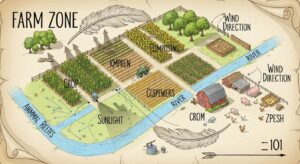
The heart of a Mistria layout lies in intentional design. It is not random planting, but instead:
-
Mapping out zones for crops, animals, and utilities.
-
Considering sunlight, soil quality, and wind direction.
-
Integrating eco-friendly practices like rainwater harvesting and crop rotation.
Think of your land as a living puzzle, where each piece must fit together for harmony. By adopting the Mistria approach, you create a sustainable farm ecosystem that’s self-supporting.
🏡 2. Zoning Your Farm or Garden
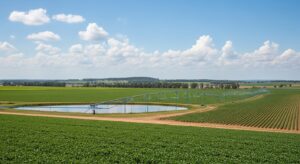
Zoning creates order and efficiency, just like a city has districts. Common zones include:
-
Production Zone – Vegetable beds, orchards, and herb patches, where most of the growing happens.
-
Utility Zone – Compost bins, tool sheds, water tanks, and workspaces. This area should be central for easy access.
-
Animal Zone – Chickens, goats, bees, or other livestock, ideally placed on the periphery to separate from crops but still connected.
-
Relaxation Zone – Seating areas, picnic tables, or shaded spots with flowers for mental wellness.
👉 Example: On a 2-acre homestead, the vegetable beds might be closest to the house, livestock placed downwind, and fruit trees bordering the property to act as natural fences.
🚰 3. Smart Water Management

Water scarcity is a challenge for many farmers, so design your Mistria layout with efficiency in mind:
-
Drip Irrigation: Reduces evaporation and delivers water directly to plant roots.
-
Rainwater Harvesting: Place barrels near roofs or greenhouses to collect free water.
-
Swales and Channels: Use the natural slope of your land to guide water into beds instead of letting it run off.
-
Greywater Systems: Reuse water from washing (if eco-friendly soaps are used).
💡 Tip: Place water tanks higher than your crops, so gravity naturally distributes water without relying on pumps.
🌾 4. Companion Planting for Productivity
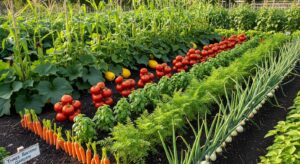
A clever Mistria layout combines plants that help each other thrive:
-
The Three Sisters: Corn provides support for beans, beans fix nitrogen, and squash suppresses weeds.
-
Tomatoes + Basil: Basil improves tomato flavor and repels pests.
-
Carrots + Onions: Onions deter carrot flies, while carrots aerate the soil.
By designing beds with plant families in mind, you reduce pests, improve soil health, and get tastier harvests.
🌳 5. Including Fruit Trees and Perennials

Perennials are the long-term investment of your Mistria design. They return year after year and require less maintenance:
-
Fruit Trees: Apples, pears, or citrus planted along borders create natural shade and windbreaks.
-
Berry Bushes: Blueberries, raspberries, or currants fill in understory spaces.
-
Perennial Herbs: Rosemary, lavender, thyme add fragrance and attract pollinators.
Tip: Place pollinator-friendly perennials near vegetable beds to boost crop yields. 🌸🐝
🐓 6. Integrating Animals into the Layout
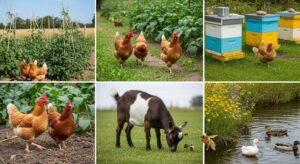
Animals are more than companions—they are farm workers if used strategically:
-
Chickens: Eat insects, scratch up weeds, and fertilize soil. Position their coop near gardens for easy composting.
-
Goats: Natural weed controllers for overgrown edges.
-
Bees: Essential pollinators that deserve a sunny, sheltered corner.
-
Ducks: Excellent slug hunters for vegetable gardens.
💡 Design rotational areas where animals move between plots. This prevents overgrazing and keeps land fertile.
🚶 7. Pathways and Accessibility

A farm should be practical, not a maze. Pathways guide your daily work:
-
Main Paths: Wide enough for a wheelbarrow or cart (3–4 feet).
-
Secondary Paths: Narrower (1–2 feet) for foot traffic between beds.
-
Materials: Gravel for durability, wood chips for eco-friendliness, and stepping stones for aesthetics.
👉 Example: A circular layout with a central compost bin and pathways radiating outward reduces travel time and keeps everything connected.
🌸 8. Blending Beauty with Function

Farms don’t need to be purely utilitarian; they can be beautiful too:
-
Plant flower strips between rows to attract pollinators and add color.
-
Install trellises for cucumbers, beans, or grapes, doubling as decoration.
-
Create shaded seating spots with pergolas covered in vines.
A farm designed with beauty in mind also becomes a relaxation retreat for family and visitors.
🔄 9. Crop Rotation and Soil Health
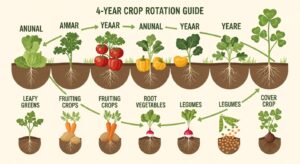
Healthy soil is the foundation of a successful Mistria layout. Design rotations to prevent nutrient depletion:
-
Year 1: Leafy crops (lettuce, spinach).
-
Year 2: Fruiting crops (tomatoes, peppers).
-
Year 3: Root crops (carrots, potatoes).
-
Year 4: Legumes (beans, peas) to restore nitrogen.
Don’t forget cover crops like clover or rye; they replenish the soil and prevent erosion.
☀️ 10. Maximizing Sunlight and Microclimates

Before finalizing your design, study how the sun and wind move across your land:
-
Place sun-loving plants (tomatoes, corn) in the south-facing zones.
-
Use shade-tolerant crops (lettuce, kale) under taller plants or trellises.
-
Install windbreaks (trees or fences) for fragile crops like peppers.
👉 Microclimate trick: Plant heat-loving crops like melons near stone walls—the walls absorb heat during the day and release it at night.
🌟 Conclusion: Building Your Perfect Mistria Layout
Designing the perfect Mistria layout means building a farm system that works smarter, not harder. With zones for crops, animals, and utilities, efficient water management, thoughtful planting, and a touch of beauty, your farm becomes a productive and harmonious ecosystem.
Instead of fighting nature, your layout flows with it, saving you time, increasing yields, and creating a farm-fresh paradise. 🌾🌱
❓ 10 FAQs on Mistria Layout
1. What is a Mistria layout?
A Mistria layout is a thoughtfully planned farm or homestead design that organizes crops, animals, utilities, and pathways into efficient zones. It helps maximize productivity while creating a sustainable ecosystem.
2. Why is a Mistria layout important for farming?
It reduces wasted space, improves workflow, supports soil and water conservation, and makes your farm or garden more manageable and visually appealing.
3. How do I start designing a Mistria layout?
Begin by mapping your land, noting sunlight, soil types, water flow, and wind direction. Then, divide your space into functional zones for crops, animals, and storage.
4. What are the key zones in a Mistria layout?
Common zones include:
-
Production Zone (crops and orchards)
-
Utility Zone (tools, compost, water tanks)
-
Animal Zone (chickens, goats, bees)
-
Relaxation Zone (seating and green spaces).
5. How does a Mistria layout improve water use?
By including drip irrigation, rainwater harvesting, and swales, the layout ensures water flows efficiently to crops while reducing waste.
6. Can a Mistria layout work on small land?
Yes! Even in a small backyard garden, you can apply Mistria principles by dividing the space into mini-zones and planting strategically to maximize yield.
7. How does the Mistria layout support soil health?
It encourages crop rotation, companion planting, and compost integration, which help maintain fertile, balanced soil over time.
8. What role do pathways play in a Mistria layout?
Pathways improve accessibility and efficiency. Wide main paths support wheelbarrows, while smaller footpaths reduce compaction around crops.
9. Can animals be part of a Mistria layout?
Absolutely! Animals like chickens, bees, and goats can be integrated to provide pollination, pest control, natural fertilizer, and weed management.
10. How do I balance beauty and function in a Mistria layout?
Blend flower strips, trellises, and shaded seating areas into your zones. This way, your farm is not only productive but also a visually pleasing retreat.